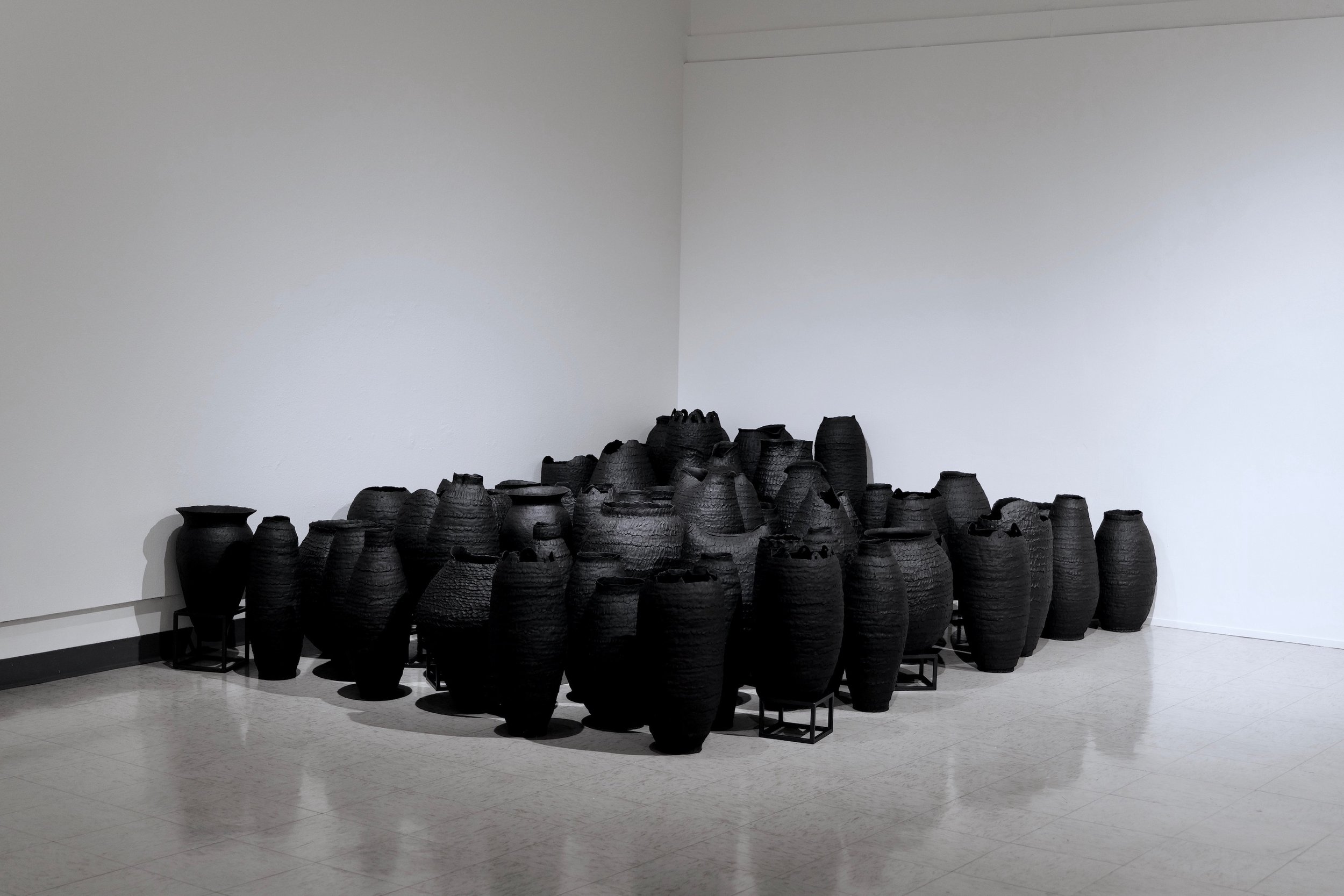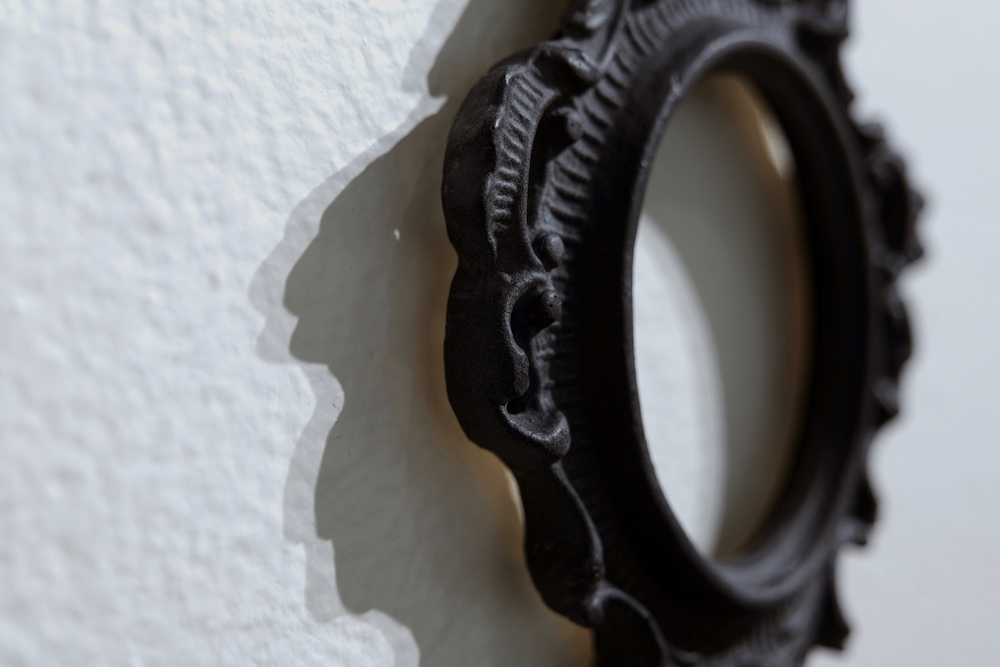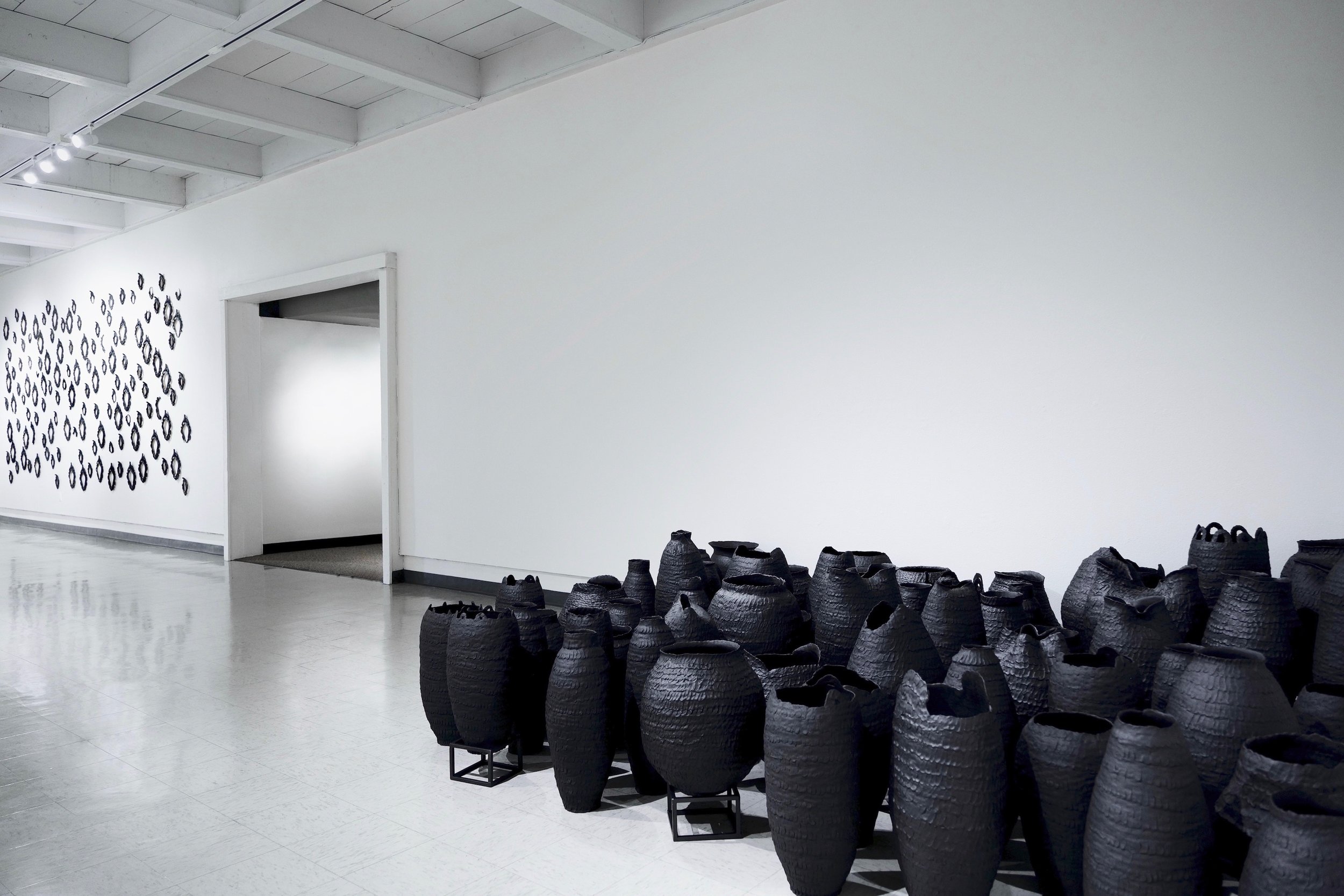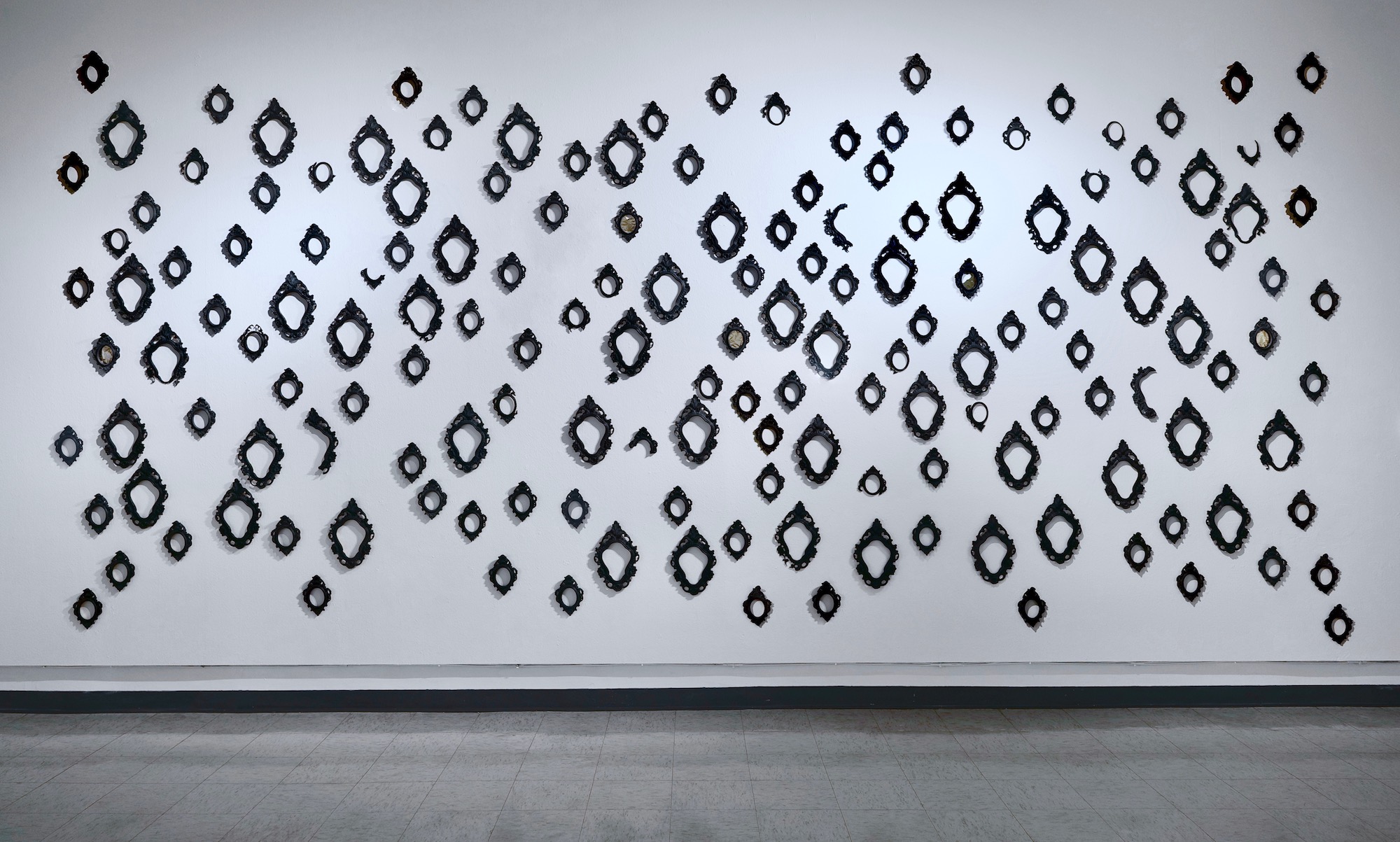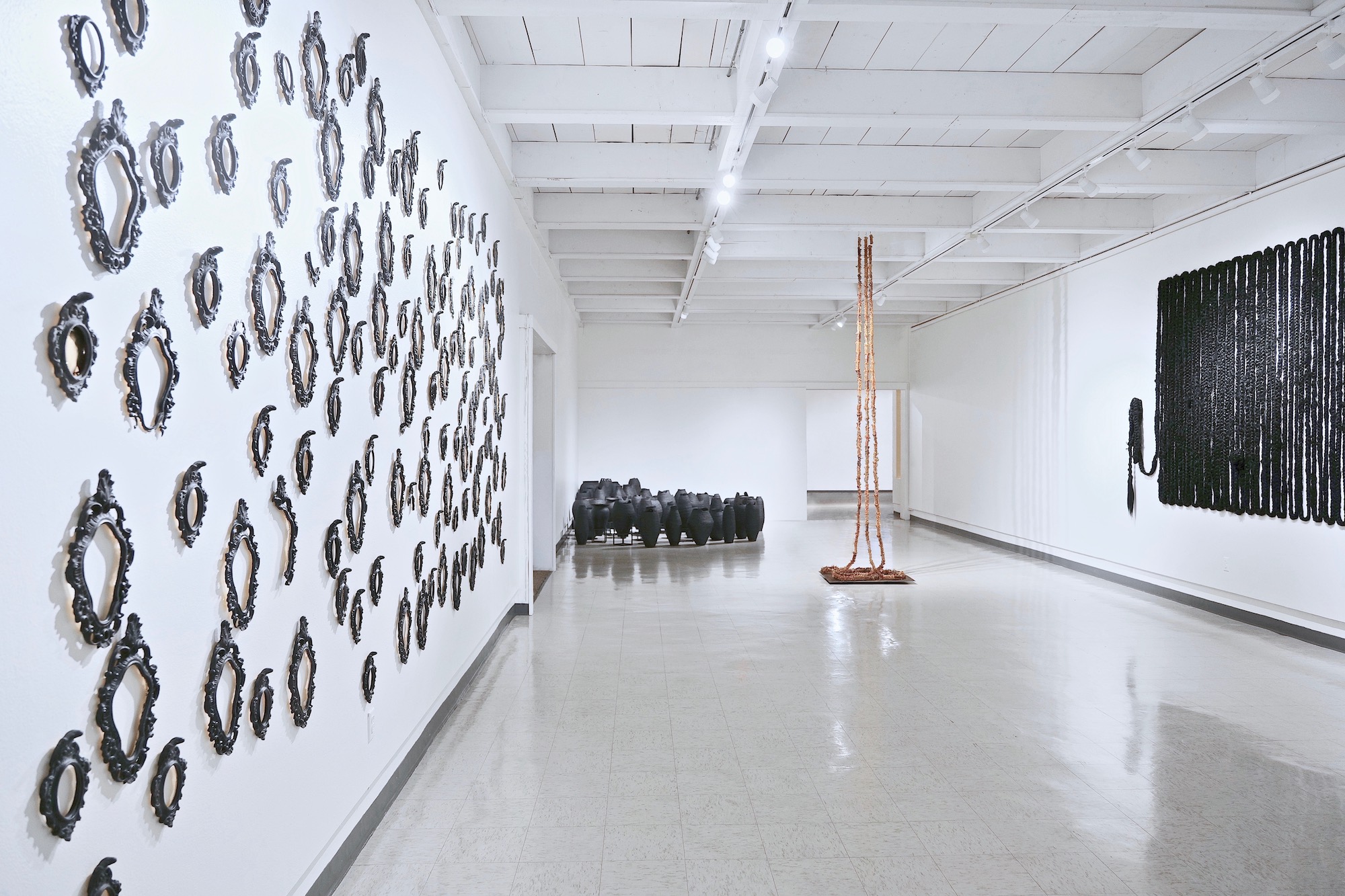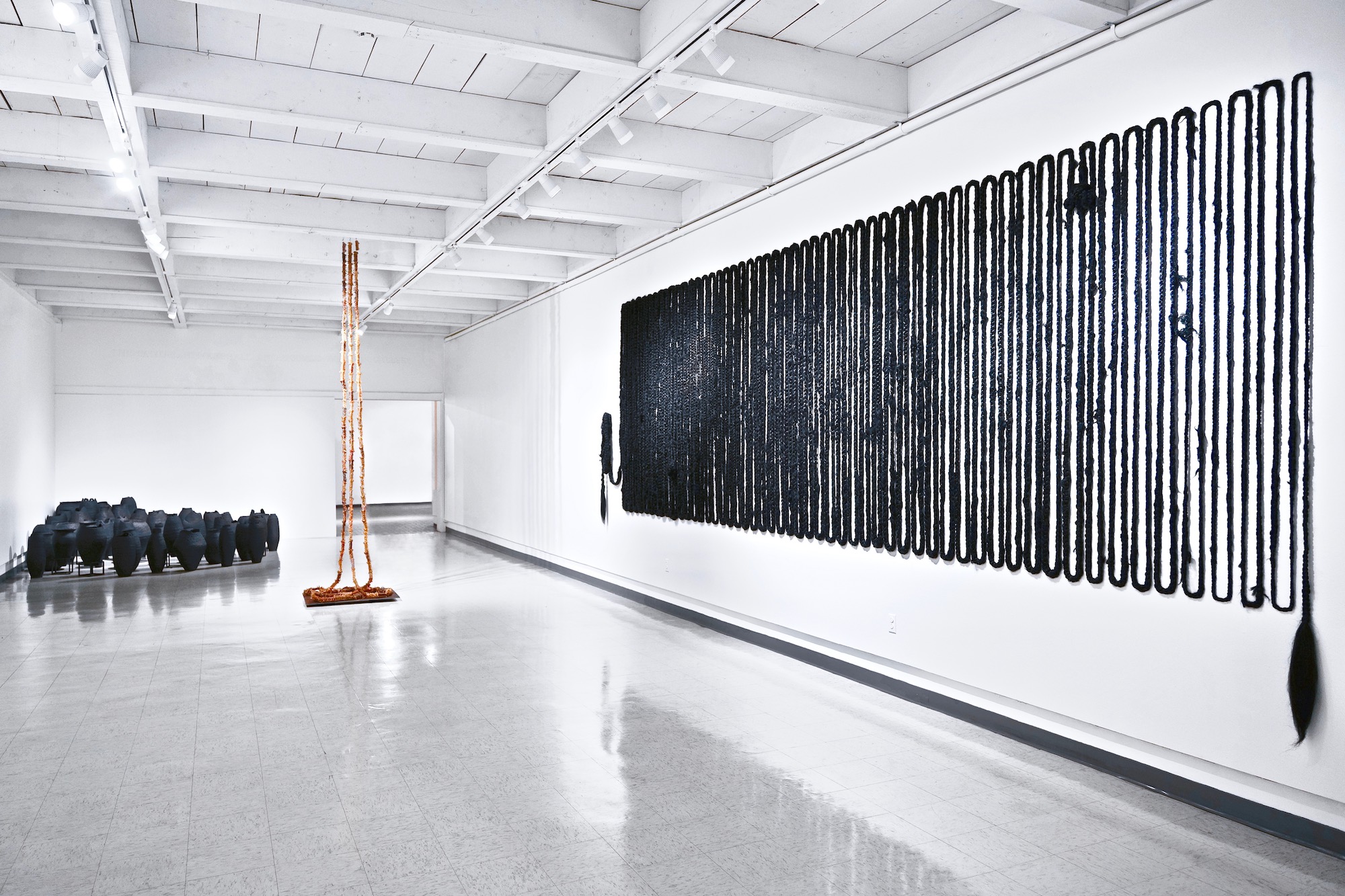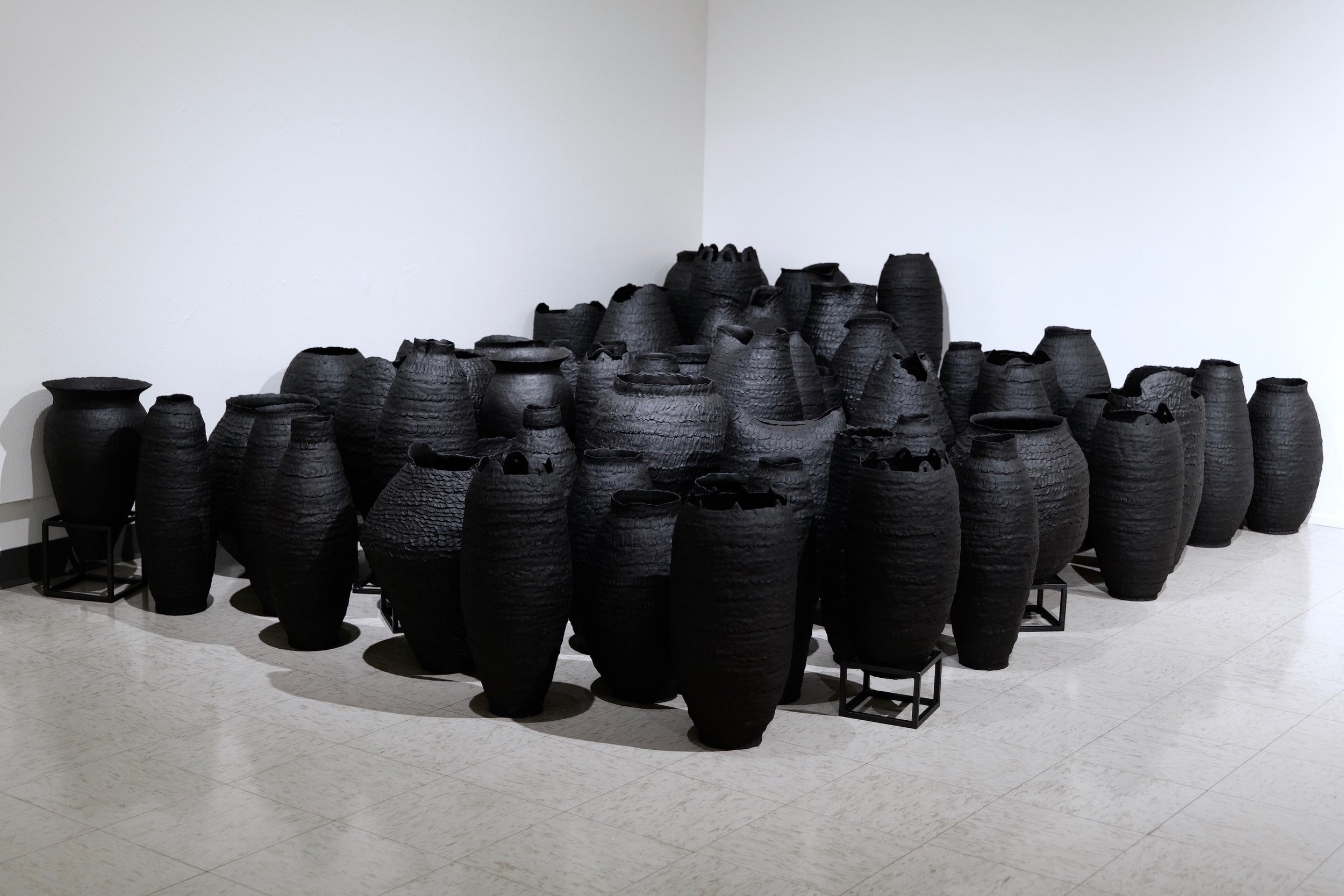AMoCA Collection | Urns (detail), 2018, ceramic, metal, dimensions variable
RAIR | 2018-19
Akiko Jackson | KAHUKU, HI
Akiko Jackson is a visual artist with an interest in working full-time in the studio while living within the context of varied art communities and non-profit art organizations. Through this ongoing research and exploration, she acquires a sense of belonging, placement, and displacement that unravels within the sculptural work she creates in installation for exhibition spaces.
Akiko Jackson is from Kahuku, a rural North Shore community on the island of O’ahu, Hawai’i. She is the recipient of numerous residencies and fellowships nationwide, was a Louise Bourgeois Endowed Fellow at the Fine Arts Work Center in Provincetown, MA and a Visual Arts Fellow at the Vermont Studio Center, Johnson, VT. Jackson is elated to be part of the RAiR Foundation and art community as a grant recipient. Jackson has exhibited her work nationally and internationally.
“During my time in Roswell, I look forward to healing. I’m interested in the idea of going ‘back to basics’ as I consider my matrilineal heritage and its rootings within Jomon and Ainu culture. In my work, I often braid hair, tie knots, rip and sew old fabric, bend wire, use gold, and coil forms. These motions are assertions of cultural identity and tradition preservation, markings made by hands, markings that tell a story of an intergenerational past.”
akikojackson.com
Roswell Museum and Art Center
Rair exhibition • Akiko Jackson "Whereof One Cannot Speak" May 24-July 7, 2019
Whereof One Cannot Speak
A dream: I am on a road in a war zone, maybe Iraq in the beginning of the last invasion. The bombed-out blacktop crumbles. Next to the craters sit women: widows, writers, warriors. I come to a checkpoint guarded by men. You can pass, they tell me, but first we must know if your blood is real.
A knife slashes my palm. In this nightmare I feel no pain. The blood is viscous, dark. The men nod. I am ushered through.
Are you real, do you bleed? No one is allowed to pass through life and witness it viscerally, in all of its iniquity and beauty, and walk away unscathed: the wages of living is grief. How do you carry what you have seen along the road, and what are the vessels in which to hold the labor and the suffering of the world?
Here are some Akiko Jackson has made. A phalanx of tall urns howling at you soundlessly with their cavernous mouths, crowding you out, forcing you to reckon with them. An emperor’s Clay Army stripped of pretense and human form, though very much in human proportion. You half-expect them to advance.
Those bottomless mouths. It is unbearable to look inside in the way that confronting death is an “unbearable emotion,” as writes the French historian Philippe Arriès about the modern Western practice of banishing death from the public eye. You look anyway—this is art—and you discover that each vessel is depthless, that you cannot fathom the bottom or what it holds, and you come away not knowing, and the not knowing is as terrifying as the grief because we do not have the emotional vocabulary to grapple with either. As terrifying as passing a mirror and glancing to find it empty, devoid of reflection. A hall of mirrors, one after another, casting back nothing but your failure to once again find purchase. A funhouse born of loss.
“A single person is missing for you, and the whole world is empty,” writes Arriès. Each moment millions of us around the globe are missing at least one person, the person often out of reach, flung apart as we are, grieving by remote, undone trans-continentally. (One of my students wrote about attending a grandparent’s funeral, in China, via Skype.) The magnitude of such a global private heartsink: We must invent a unit of measure for it, I think, as we have invented units of measure for the other inconceivable devastations: the war dead, the migrants who perish at sea, the degree of ozone depletion.
Ritual does not alleviate the sorrow but, like vocabulary, attempts to make sense of it. It extends our grief outside our selves—and it also forces us to bring into existence something other than mourning: it makes us create something. Think of the artist coiling intention into the clay urns, think of her prayerlike repetitive casting mirror frame and neckbone again and again and again: creation that exists against and alongside grief, beauty born out of bereavement.
On a spring evening near Akiko’s studio a sedge of sandhill crane catch a thermal above the Pecos River and rise, circling. They wheel higher and higher, oblivious to our witness, and I remember the last lines in a Galway Kinnell poem from The Book of Nightmares:
we will walk out together among
the ten thousand things,
each scratched in time with such knowledge, the wages
of dying is love.
Anna Badkhen has spent most of her life in the Global South. Her immersive investigations of the world's iniquities have yielded six books of literary nonfiction, most recently Fisherman’s Blues. She has written about a dozen wars on three continents, and her awards include the Guggenheim Fellowship, the Barry Lopez Visiting Writer in Ethics and Community Fellowship, and the Joel R. Seldin Award from Psychologists for Social Responsibility for writing about civilians in war zones.




